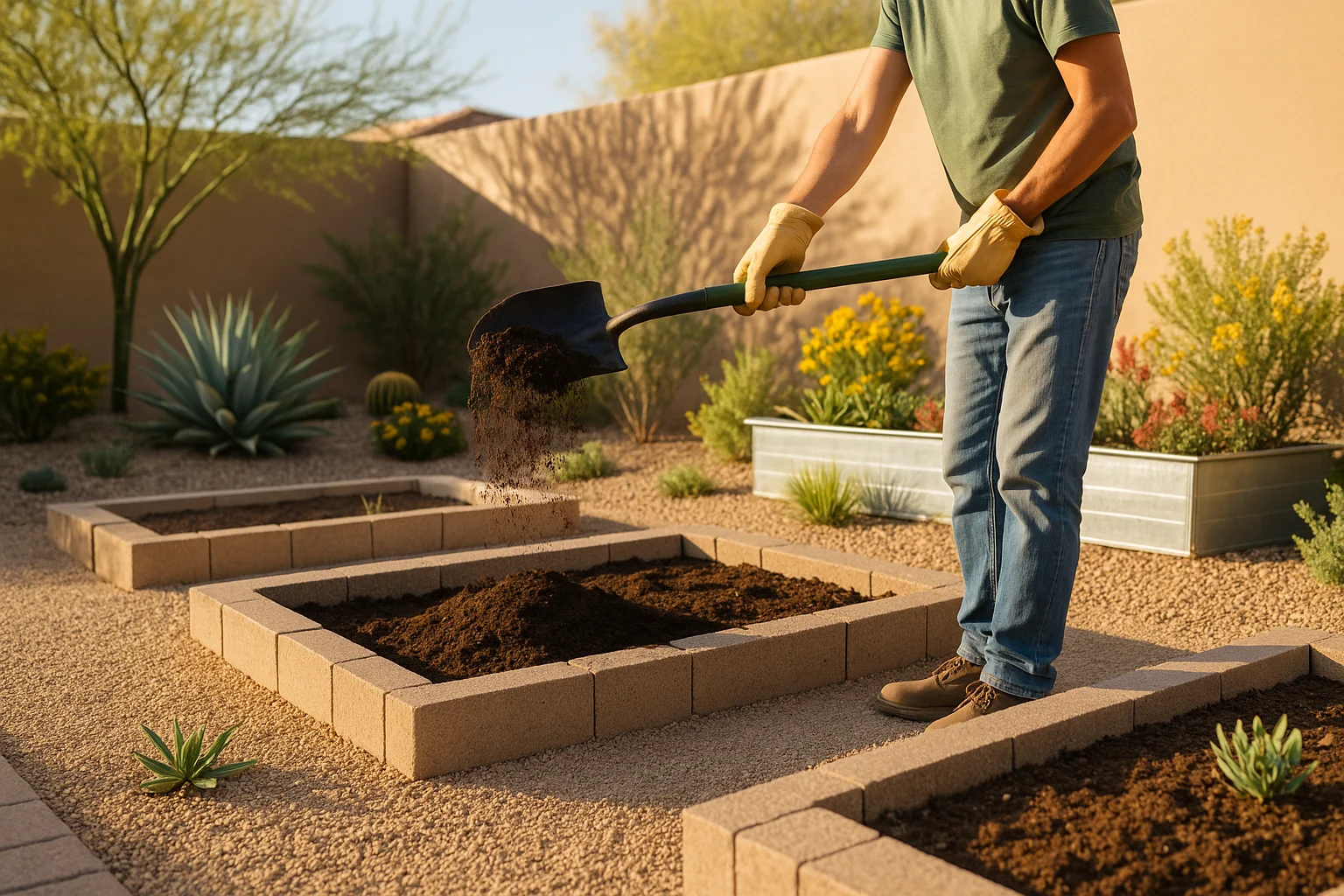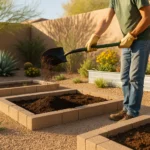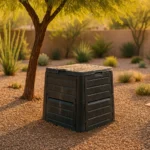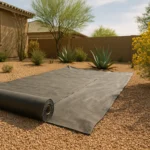When the spring sun warms the soil, it’s a signal to plants that it’s time to start growing. In the Southeast Valley, this process can happen quite rapidly due to our temperate climate. It’s crucial to understand how to harness the power of the warming soil to optimize your yard for spring. So, let’s dive into some expert tips that will help you make the most of this season.
The Power of Warmer Soil
During the spring, the soil’s temperature rises, energizing the dormant organisms within the soil. These organisms include beneficial microbes that are crucial for healthy plant growth. They aid in the breakdown of organic matter, releasing essential nutrients that plants need to grow and thrive.
Moreover, warmer soil temperatures also stimulate seed germination and root growth. Ensuring that your soil is warm enough is crucial to promoting healthy, lush growth in your spring garden. However, warming the soil naturally requires a little bit of knowledge and effort. Let’s explore some practical ways to warm up your soil and prepare your yard for spring.
Using Compost to Warm the Soil

Compost is a gardener’s best friend, and it plays a crucial role in warming up the soil. As compost breaks down, it releases heat, which can help warm the soil in your garden beds. This process, known as thermophilic composting, is an efficient way to heat your soil naturally and organically.
To utilize compost in this way, all you need to do is spread a layer of compost over your garden beds. The compost will gradually break down, releasing heat and warming the soil beneath. Additionally, compost also adds valuable nutrients to the soil, further enhancing its fertility and promoting plant growth. If you’re unsure about composting, you can visit EPA’s guide to composting at home.
Using Mulch to Retain Heat
Mulch is another effective way to warm your soil. Not only does it help retain heat in the soil, but it also prevents moisture loss, suppresses weed growth, and adds organic matter to the soil as it breaks down.
For the best results, spread a 2-3 inch layer of mulch over your garden beds. This will create an insulating layer that traps heat within the soil, keeping it warm even during cooler nights. You can use organic mulches like straw, wood chips, or shredded leaves for this purpose. Remember, the goal is to keep the soil warm, not hot. Excessively hot soil can damage plants and beneficial soil organisms. For more information on mulching, check out our article on Mulching 101 for Gilbert: Save Water and Beat the Heat.
Choosing the Right Plants for Warmer Soil
Not all plants react the same way to warmer soil temperatures. Some plants thrive in warm soil, while others prefer cooler soil conditions. For the Southeast Valley, it’s essential to choose plants that can handle our warmer soil temperatures.
Plants that love warm soil include tomatoes, peppers, squash, eggplant, and cucumbers. These plants thrive when soil temperatures are between 70-90°F. On the other hand, leafy greens like lettuce, spinach, and kale prefer cooler soil temperatures. So, it’s crucial to understand the specific soil temperature preferences of the plants you’re growing to make the most of your spring garden.
Testing Soil Temperature
Knowing the exact temperature of your soil can help you decide when to plant different crops. You can use a soil thermometer to measure soil temperature accurately. The best time to check the soil temperature is in the morning when the soil has had the chance to cool overnight.
Keep in mind that different crops have different soil temperature requirements for optimal growth. For example, tomatoes and peppers require soil temperatures of at least 60-65°F for the best results. On the other hand, cool-season crops like peas and spinach can tolerate soil temperatures as low as 40°F.
Final Thoughts
Understanding the power of warmer soil and how to harness it effectively is crucial to having a successful spring garden in the Southeast Valley. With the right methods, from using compost and mulch to choosing the right plants and monitoring soil temperature, you can optimize your yard for spring growth.
Remember, every garden is different. What works for one yard might not work for another. So, don’t be afraid to experiment and find the best methods that work for your specific garden conditions. Happy gardening!






